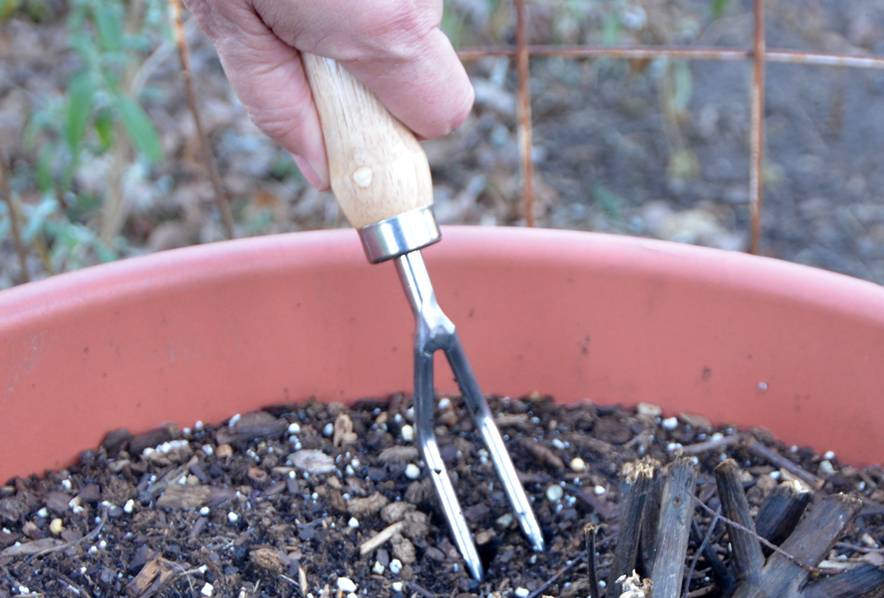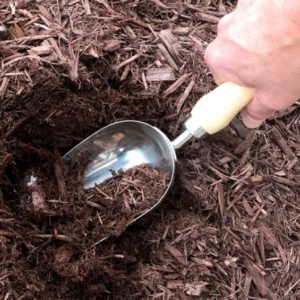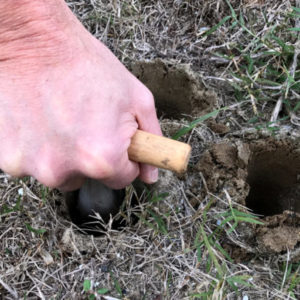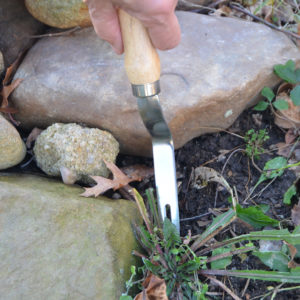Description
The Harvesting History Heirloom
Weeding Fork
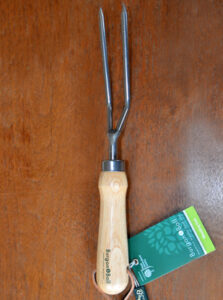 RECIPIENT OF THE ROYAL HORTICULTURAL SOCIETY’S ENDORSEMENT OF DISTINCTION
RECIPIENT OF THE ROYAL HORTICULTURAL SOCIETY’S ENDORSEMENT OF DISTINCTION
Agricultural forks were designed to fulfill one of two functions: digging, especially in subsoil hardpans, and scooping to relocate soil or remove objects. Given their cultivating popularity, it is amazing that the fork is a relatively new agricultural invention. The Basques may be credited with designing the fork because for millennia they used a two-tine fork which they called the laya. However, until the introduction of the first all steel fork by Alexander Parkes at The Great Exhibition in London, England in 1851, forks had been rarely used.
The predecessor, the iron fork, was extremely heavy. For each tine to be able to resist the bending forces generated by digging the iron had to be incredibly thick and so was of limited utility
Alexander Parkes, himself a well-respected inventor, began discussions with Henry Bessemer about creating a steel that possessed three qualities: stiffness, lightness and suppleness. Parkes reasoning was that it would be impossible to create a fork with slender tines that would never bend. He believed that the viable fork design would have tines that if bent could be restraightened without loss of strength. He proved to be correct. His forks sold very well and moved the market from iron forks to steel forks.
The hand tool, round tine fork, introduced in the latter part of the Victorian Era (1837-1901) is a good sense product. The product originated in Britain. Hand forks manufactured in the US and elsewhere all possessed flat tines. Flat tine forks are adequate for scooping, but virtually impractical for turning soil and removing rocks, roots and other impenetrable objects. Round tine forks are exceptional for maneuvering around objects in the soil in order to remove them.
This round tine fork is far, far more versatile than any flat tine fork. Under extreme stress, the tines will bend, but as Alexander Parkes designed, the bent tines can be straightened without loss of strength. It is a tool for which any gardener will find a multiplicity of uses.

